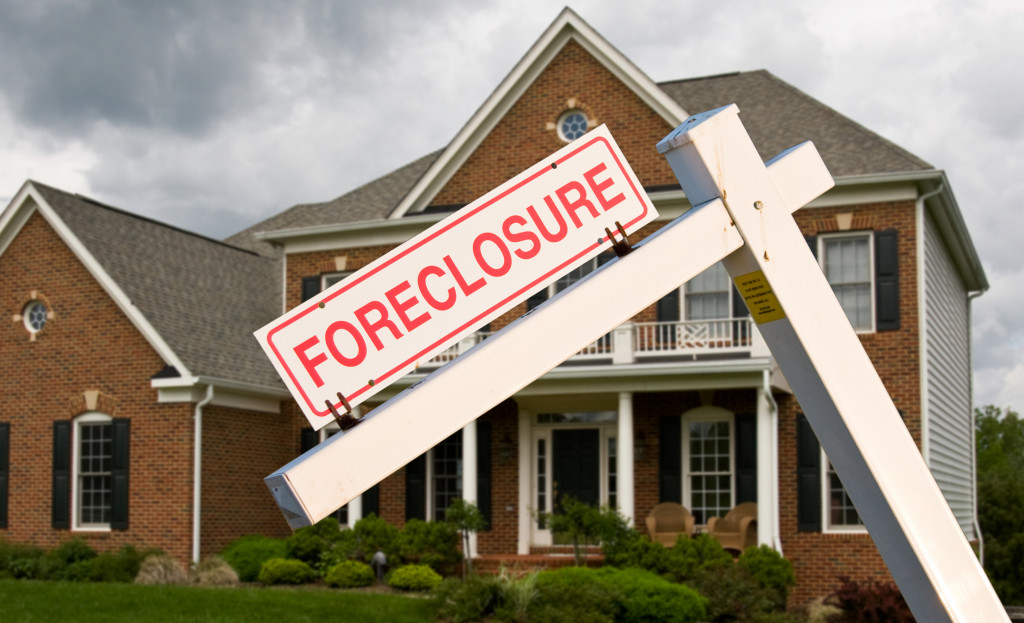wForeclosures and pre-foreclosure properties are unfamiliar concepts to many would-be homeowners. People often get encouraged to join the bidding when they see these houses on well-known websites because they think they can save more money through a lower price. However, investors in pre-foreclosures might try to bargain with vendors, even if it is illegal. Some states regulate what homeowners can and cannot do if they still owe money on their mortgages and are at risk of foreclosure.
What “Pre-foreclosure” Means
Pre-foreclosure homes are off-market and distressed properties that have not yet been recovered by a lender and sold at biddings. Pre-foreclosed homes are usually inhabited by their previous owners that are behind on their monthly mortgage. Skilled real estate speculators frequently target distressed homeowners in pre-foreclosure, will make the payment they owe to their lender, and then acquire the off-market house straight from them at a significant discount.
1. Consider the Surrounding Area
Make sure the community surrounding your pre-foreclosure home is in tip-top shape. With excellent neighborhood investment, you’ll reap the rewards of appreciation. There is a big difference between mediocre returns and excellent ones when it comes to this. Consider the following while searching for communities with high appreciation potential:
- Trendy retail, such as coffee shops and juice bars
- An increase of prices in Airbnb, along with plenty of 5-star ratings
- Tech-savvy neighbors
- Artists and hipsters

2. Find Promising Leads
In purchasing pre-foreclosure homes, you will have to start generating leads that can result in a successful transaction. You can find pre-foreclosure leads in various ways, but they all require much work.
Here are a few examples of manual techniques:
- Driving for Hours
A motivated seller is constantly on the investor’s radar. Some signs they’ll look for include: a neglected front yard, an overflowing mailbox filled with letters, and stacks of newspapers piled on their doorstep. These indicators usually mean the landowner doesn’t care for the property and is likely interested in selling it for less than fair value.
- Marketing Through Email & Direct Mail
You can produce a list of possible sellers by searching public documents at the local county assessor’s office. Investors in real estate seek particular types of knowledge to evaluate if a seller has enough motivation. The recent death of a shared tenant, an absentee owner, an aging owner, an owner living outside the state, and the property being on the market for a substantial number of days are all indicators.
3. Due Diligence
Pre-foreclosure properties are an excellent way to get a great deal on a home. If you’ve found one, make sure to do your due diligence. A problematic pre-foreclosure home will require more due diligence than a listed turnkey property. Extreme thoroughness might be necessary for this. It’s for a reason why these homes are under pre-foreclosure. There’s nothing worse than skipping due diligence processes and ending up in a worse situation than the initial owner that sold you the property.
4. Get a Loan
You will need to have a pre-approval statement for a lender before buying a pre-foreclosure home. Using this letter, you’ll be able to find out how much you’re allowed to borrow. This letter also shows the pre-foreclosure seller that you are a serious and qualified buyer. Without this letter, most agencies will not want to work with you. Instead of putting down a traditional down payment, you’ll pay the current owner’s debt instead of providing the conventional down payment.
As a result, you’ll be accountable for any possible property liens, the loan balance, as well as any overdue homeowner’s insurance and mortgage. Paying the pre-foreclosure home’s seller will allow you to take possession of the property. If you can pay in full with cash, the transaction will move much more smoothly. If cash isn’t available, they will require a hard money loan, as a standard loan would not be authorized for a pre-foreclosure purchase.
5. Strike a Deal
Putting up an offer on a pre-foreclosure is the last stage in the process. Pre-foreclosure properties can be bought directly from the existing owner by paying off their debt to their lender. It is the smoothest method to purchase a pre-foreclosure home.
However, sellers are sometimes taken advantage of by more experienced investors. Since most sellers have no idea what their house is worth on the open market, this becomes a common occurrence. Foreclosures are often purchased for considerably less than market value by experienced investors who lowball the seller.
As a result, specific regulations have been passed to allow a distressed seller to back out of a transaction even after reaching an agreement.
Final Thoughts
Purchasing a pre-foreclosure property is an excellent way to get a house at a lesser price than the market. The competition will be less intense than at an auction, where you’d have to compete with other investors to purchase a repossessed home. As a new investor, you’ll want to understand the ropes before jumping into pre-foreclosure distressed properties.
